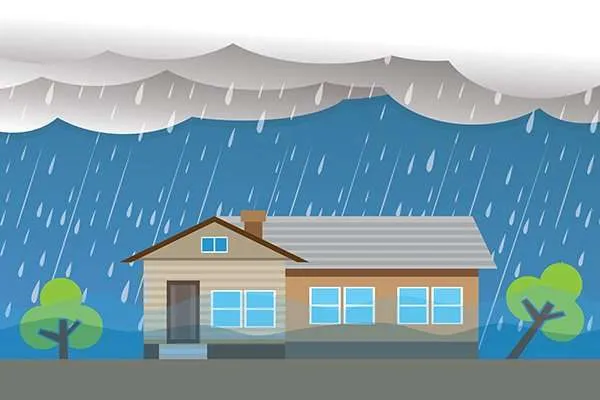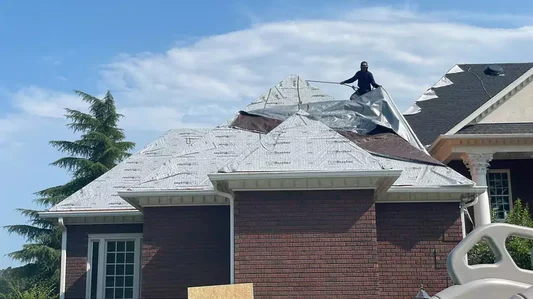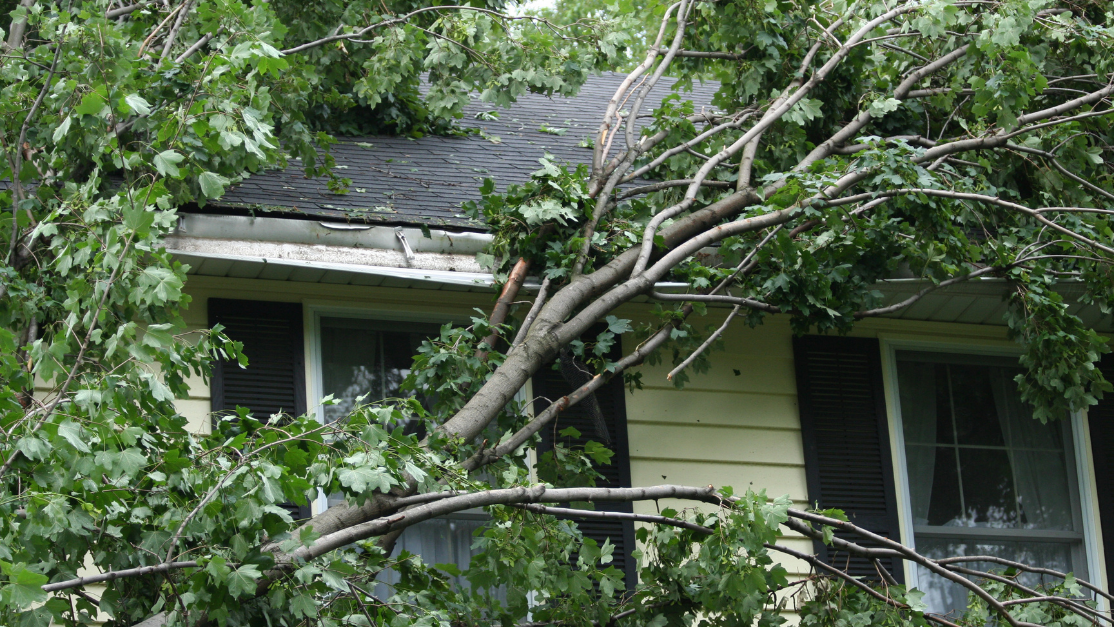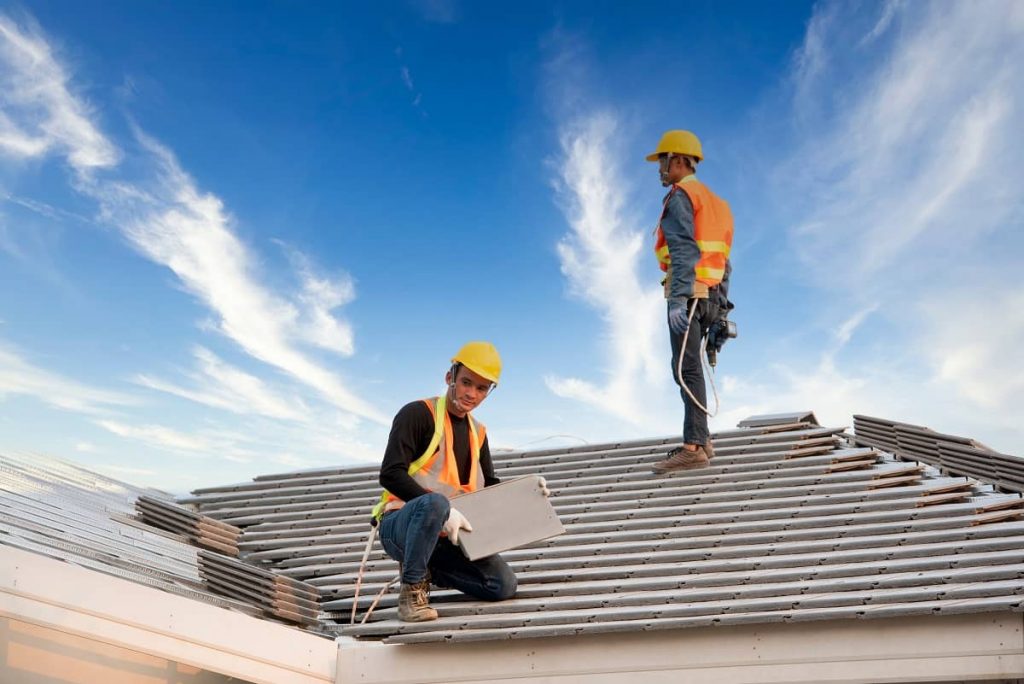Four Things I Learned From Submitting an Insurance Claim for Storm Damage
Advertisment
After the storm subsided, I took a walk around my yard checking for damage. At the time, the only major impact I noticed was to our garden and landscaping. The plants in my garden and many of the flowers and shrubs in the yard had been beaten down and completely stripped of their leaves and blossoms. Other than that, I didn’t notice any other damage – the roof looked fine from ground level, we had no broken windows, our truck was free of dents, and our vinyl fence was unscathed.
About a week after the storm, we started seeing what I referred to as “storm chasers” – companies who follow severe weather from place to place, soliciting the opportunity to repair homes damaged by wind and hail. Many of our neighbors took advantage of the opportunity for a free inspection offered by these companies and learned they had hail damage to the roof of their homes. So, we decided we needed to take a closer look at our home.
From ground level, our roof appeared to be fine. But upon closer inspection, we could see a significant number of hail hits. We also found damage to our siding and air conditioning unit. We weren’t sure if this type of damage was covered by our insurance policy, so we contacted our agent. She confirmed our policy covered hail damage, so we decided to move forward with filing an insurance claim.
Here are four things I learned during the storm damage insurance claims process.
Keep in mind, this was my experience – your experience may differ depending on how your insurance company processes storm damage insurance claims as well as the terms of your policy.
1) The claims process takes time.
The process went quickly at first. We filed the claim on a Friday, and the storm damage insurance inspector came the following Monday. We knew the day of the inspection that the damage was severe enough we would need to replace the roof on our home and shed and the siding on our home.
However, it took time for the inspector to write his report and for the insurance adjustor to review and approve it. We received our first claims payment from the insurance company about a month after the inspection.
2) Your mortgage company will likely be involved.
When we received the first payment from the insurance company, I noticed the check was written as payable to my husband, me, and our mortgage company.
I learned this is a standard industry practice for homes with a lienholder. Since your mortgage company is part owner in your home, they have a vested interest in making sure you take care of it, including making repairs from storm damage.
In order to cash any checks you receive from the insurance company with your lienholder listed as a payee, your mortgage company will need to endorse the check. Our mortgage company does not have an office in our area, so we had to mail our checks to them to request endorsement.
Once I learned this would be the process, I asked our storm insurance claims adjustor to mail the additional claims payments directly to our lienholder first, rather than sending them to us. The mortgage company endorsed the checks and then sent them to us after that. This saved us a bit of time in the long run. If your lienholder is local, this step won’t be as time consuming.
3) Keep track of the money you receive from the insurance company for storm damage insurance claims payments.
We received three different insurance claims payments for our storm damage. The first payment was for the actual cash value of the roof and siding. Once we had the roof and siding replaced and provided proof to the insurance company, we received the additional funds for the claim.
As I was preparing to pay the roof and siding companies, I realized the money we had received did not match up to the final amount we owed the contractors. We were short about $350. I contacted our insurance adjustor, and he realized where the mistake had been made, so he issued a third check to cover the difference.
Here’s what I recommend:
If possible, keep the insurance claims payments for storm damage you receive in a separate bank account so you don’t spend the money in the wrong place.
We received our first payment in September, but we didn’t receive final invoices from our contractors until December. Because I had the money in a separate account, it was isolated from our other banking activities and available in full when I needed to pay the roofing and siding contractors.
Keep track of the amount you receive from the insurance company and know the breakdown on how much you owe to who.
The report we received with the breakdown of repairs and expenses was extensive and confusing. It was hard to get a quick summary from the report of what amount had been approved for repairs and what I would be receiving from the insurance company. When we received our storm damage insurance claims payments, I contacted our adjustor and asked for a brief breakdown of how much I owed the contractors. This was how I ultimately ended up discovering we had not received the full amount of claims payments, so I was able to get that corrected with our adjustor.
4) Do your research on repair companies.
Because so many homes in our area sustained hail damage, there were quite a few restoration companies who approached us about repairing our home. We reached out to a couple of local contractors for bids on the repairs, and we also researched the out-of-town contractors who approached us.
Here are a few deciding factors for us in how we chose our roofing and siding contractors:
- Reputation. We checked Google and Facebook reviews for the companies we were considering. This was a huge deciding factor for us.
- Pricing. Some of the bids for repairs were not competitive with other bids we had received. Our insurance company had approved a set amount for the repairs, and we needed to find contractor who could do the work for the approved price.
- Responsive. Some of the contractors we reached out to took quite a while to respond with a bid. Some didn’t show up at all.
- Knowledgeable. Ultimately, the roofing contractor we chose was one that specializes in roof repairs following severe weather. They have solid experience working with insurance companies and are knowledgeable in reviewing the inspection reports and understanding what is approved for repair. They were also staffed with enough crew members to do the work in a timely manner.
- Professional and courteous. The contractors we worked with on our repairs were professional and courteous from the beginning and throughout the process. They took time to explain the repair process and answer the questions we had. Considering the length of time we worked with the contractors on this project, it was nice to have someone who was professional and treated us, our adjustor, and our inspector with respect.
Filing a storm damage insurance claim on your homeowners policy can be an extensive process. I was glad to have a good insurance agent and claims adjustor who were both available and responsive. While we spent a lot of time going back and forth getting questions answered and working out the details of the claim, it was nice working with a company who I knew would take care of us and help us through the process. When you are looking for an insurance agent specializing in storm damage, keep these things in mind.
Advertisment








Post Comment